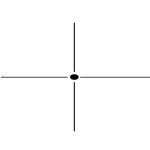- Location
- Western Manitoba
I'm looking to try out various brands of ammo / various shot sizes. I have never even seen a proper patterning board, so looking for suggestions. I have a used and condemned 60" diameter circular saw blade - for the moment, I was thinking to cut a 30" diameter circle and set up at 40 yards away on a post. Is a fair amount of cheap white paint available - I thought to slosh some on, take a shot - take a picture of the pattern, then paint over and repeat. Is this close to a "real" patterning board and how one is used? It has been a few years since I had that saw blade out of it's wooden case - as I recall, it is circa 3/16" or 1/4" thick with a hole for mandrel, in the centre of it.










































































